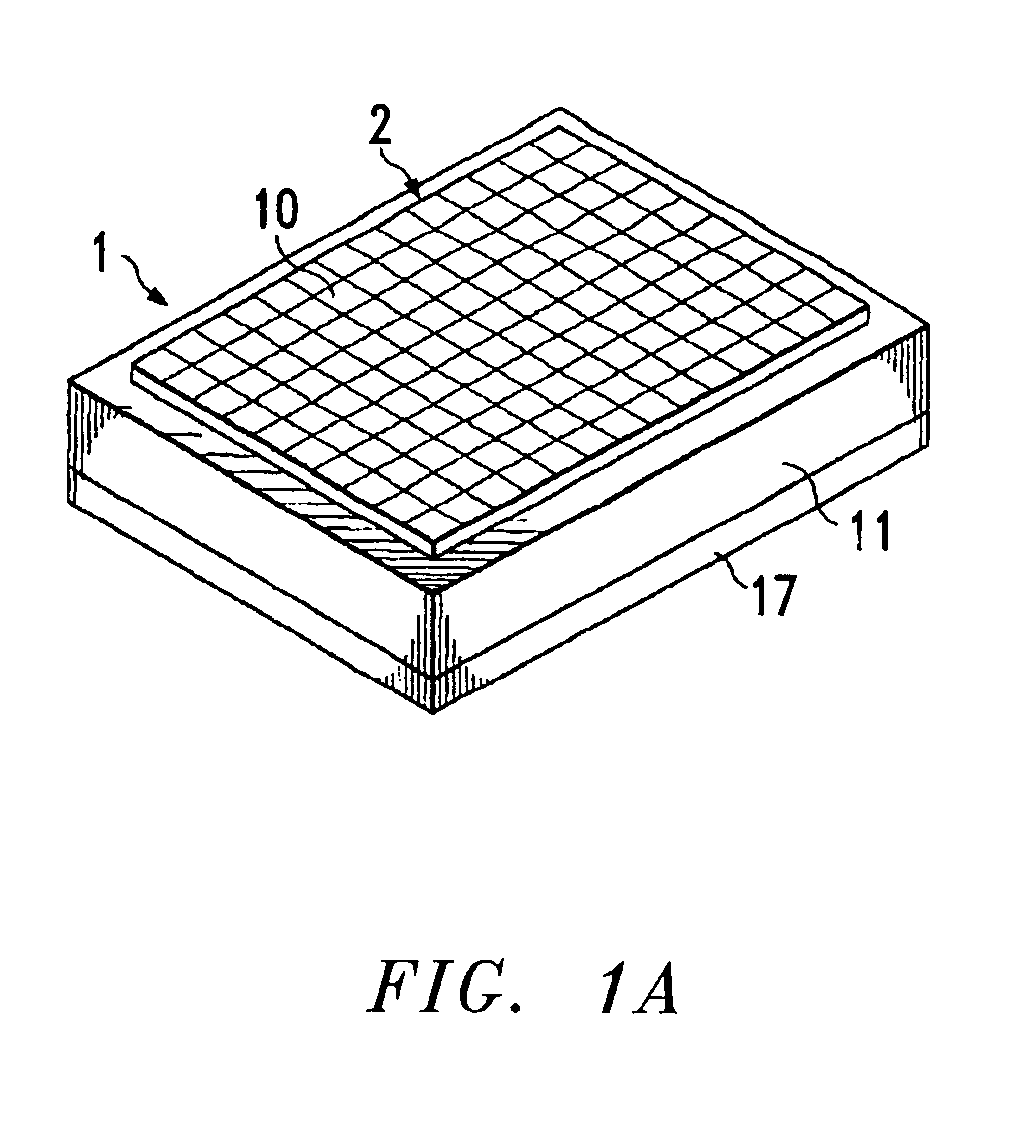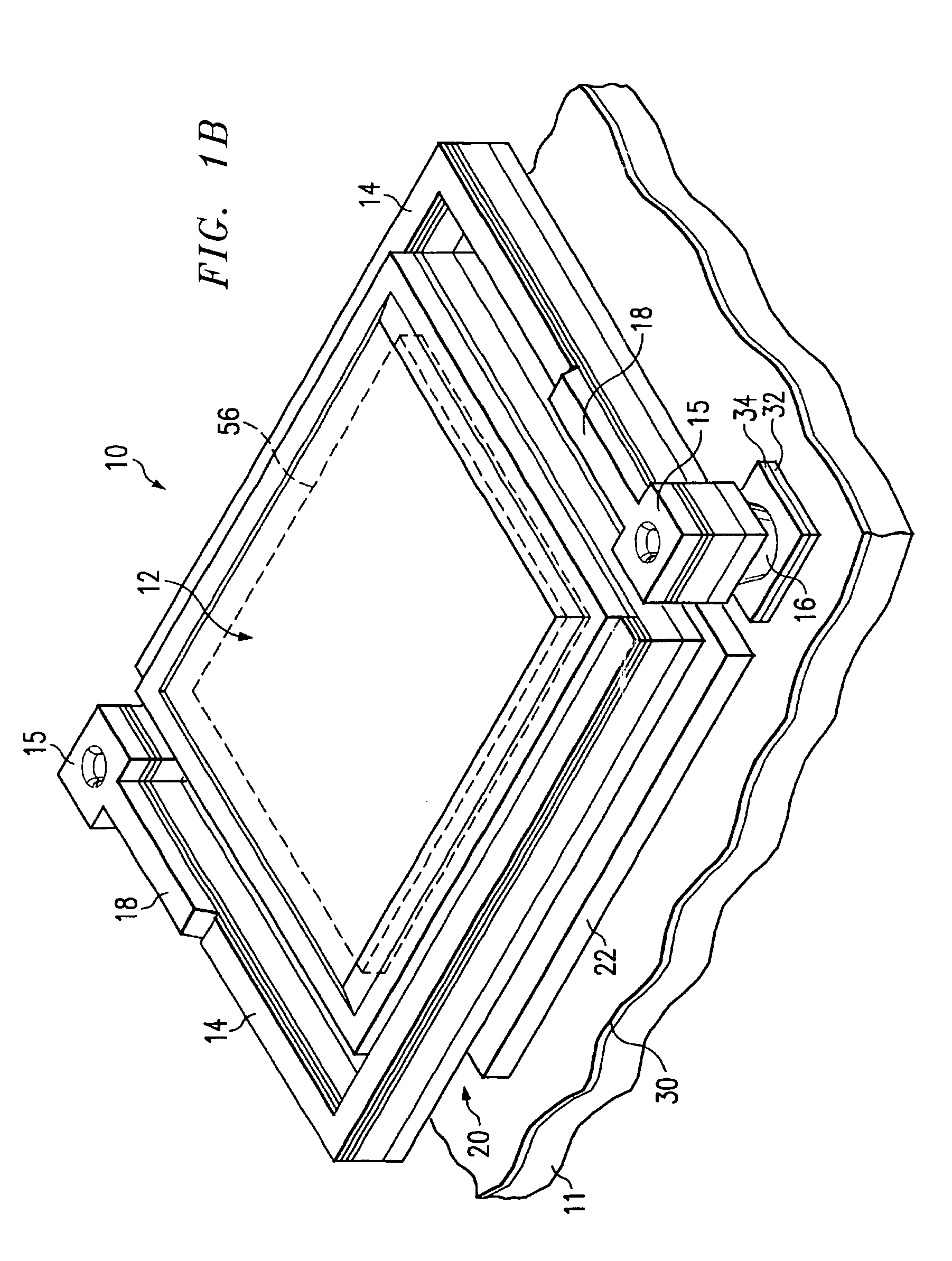Microbolometer infrared detector elements and methods for forming same
a microbolometer and infrared detector technology, applied in the field of infrared detectors, can solve the problems of high resistance which is difficult to match with input impedance, and achieve the effect of promoting stable atomic configuration of amorphous silicon film
- Summary
- Abstract
- Description
- Claims
- Application Information
AI Technical Summary
Benefits of technology
Problems solved by technology
Method used
Image
Examples
Embodiment Construction
[0047]FIG. 1A is a diagrammatic perspective view of one embodiment of an infrared detector 1 which is capable of sensing thermal energy and of outputting electrical signals representative of a two-dimensional image of that sensed thermal energy. The infrared detector 1 includes a focal plane array 2 disposed on a substrate 11. The substrate 11 may include an integrated circuit of a type which is commonly known as a read out integrated circuit (ROIC). The ROIC reads out the thermal information gathered by the focal plane array 12.
[0048]A thermal element 17 may be optionally provided on the side of the substrate 16 opposite from the focal plane array 2, in order to serve as a form of controlled heat sink which maintains the integrated circuit substrate 11 at a substantially constant temperature which is predefined. The constant temperature prevents ambient or internally generated temperature gradients from affecting operation of the focal plane 2, and thus provides a baseline with whi...
PUM
| Property | Measurement | Unit |
|---|---|---|
| size | aaaaa | aaaaa |
| temperature | aaaaa | aaaaa |
| wavelength range | aaaaa | aaaaa |
Abstract
Description
Claims
Application Information
 Login to View More
Login to View More - R&D
- Intellectual Property
- Life Sciences
- Materials
- Tech Scout
- Unparalleled Data Quality
- Higher Quality Content
- 60% Fewer Hallucinations
Browse by: Latest US Patents, China's latest patents, Technical Efficacy Thesaurus, Application Domain, Technology Topic, Popular Technical Reports.
© 2025 PatSnap. All rights reserved.Legal|Privacy policy|Modern Slavery Act Transparency Statement|Sitemap|About US| Contact US: help@patsnap.com



